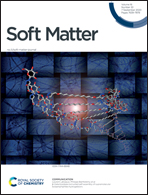A unified understanding of the cononsolvency of polymers in binary solvent mixtures
Abstract
The standard random phase approximation (RPA) model is applied to investigate the cononsolvency of polymers in mixtures of two good solvents. It is shown that in the RPA framework, the two types of cononsolvency behaviors reported in previous theoretical studies can be unified under the same concept of mean-field density correlations. The two types of cononsolvency are distinguished by the solvent composition at which maximum immiscibility is predicted to occur. The maximum immiscibility occurs with the cosolvent being the minor solvent if the driving mechanism is the preferential solvation of polymers. For the cononsolvency driven by the preferential mixing of solvents, the maximum immiscibility is predicted at a symmetric solvent composition. An interplay of the two driving forces gives rise to a reentrant behavior in which the cononsolvency of the two types switches from one to the other, through a “conventional” region where the overall solvent quality varies monotonically with the solvent composition. The RPA model developed in this work provides a unified analytical framework for understanding the conformational and solubility transition of polymers in multi-solvent mixtures. Such findings highlight the complex role played by the solvents in polymer solutions, a problem of fundamental and practical interest in diverse applications of materials science.



 Please wait while we load your content...
Please wait while we load your content...